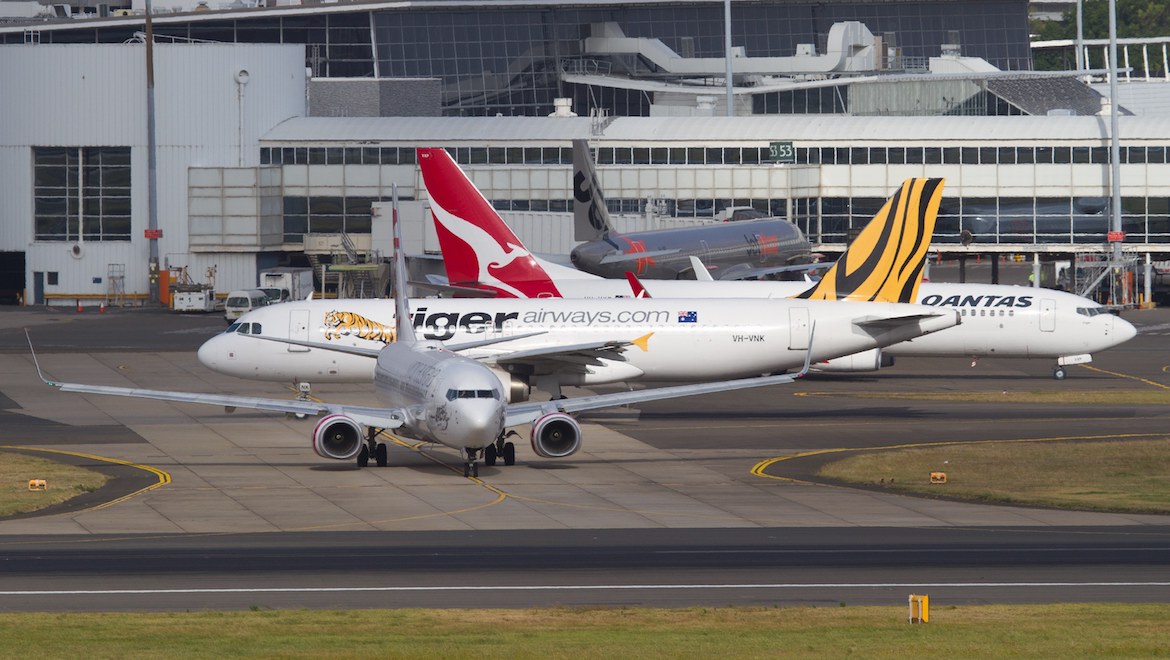
Sydney Airport reported a 1.2 per cent improvement in domestic passengers for September to snap a three-month run of declining local travellers.
The airport’s monthly traffic statistics, published on Friday, showed there were 2.29 million domestic passengers at Kingsford Smith in September, up from 2.26 million in the prior corresponding period.
It was the first positive month for domestic passengers since May.
Further, it was only the second time in calendar 2019 Sydney Airport has posted positive domestic traffic growth compared with the same month in 2018.
[su_table]
| Month | Percentage change in domestic passengers |
| January 2019 | Flat |
| February 2019 | -2.7 |
| March 2019 | -3.4 |
| April 2019 | -1.3 |
| May 2019 | +0.3 |
| June 2019 | -1.6 |
| July 2019 | -0.7 |
| August 2019 | -1.3 |
| September 2019 | +1.2 |
[/su_table]
SOURCE: Sydney Airport monthly traffic reports
Despite the September improvement, the number of domestic passengers at Sydney Airport had fallen 1.1 per cent through the first nine months of 2019, compared with the prior corresponding period.
On a more positive note, Sydney Airport said international passengers grew for a second straight month in September, rising 1.9 per cent to 1.37 million.
International passengers have risen 1.4 per cent in the nine months to September, compared with the prior corresponding period.
In total, Sydney Airport handled 3.65 million passengers in September, down 0.1 per cent from a year ago.
Sydney Airport chief executive Geoff Culbert described the year-to-date figures for international passenger growth as “holding steady”.
“Arrivals from India recorded their second consecutive month of double-digit growth, up 11.2 per cent on September 2018 and up 8.4 per cent year to date,” Culbert said in a statement.
“We’re supportive of Federal Tourism Minister Simon Birmingham’s focus on India which reflects the growth and potential we are seeing.”
“Indonesian passenger growth was another highlight, posting 16.1 per cent growth on September 2018.”

Meanwhile, Brisbane Airport’s monthly traffic statistics showed domestic passengers were up 3.7 per cent in September, while the number of international passengers rose 1.6 per cent, compared with the prior corresponding period.
The airport had 2.07 million passengers in total for September, an improvement of 3.2 per cent from a year earlier.
Australia’s major airline groups have spoken of weakness in parts of the domestic market in recent times.
Qantas chief executive Alan Joyce said at the airline group’s 2018/19 full year results the corporate sector was flat, while the resources market was continuing to rebound. Meanwhile, there was also some weakness in among price-sensitive leisure travellers.
Virgin Australia chief executive Paul Scurrah said at the company’s 2018/19 full year results it was a tough economic climate with high fuel, a low Australian dollar, and subdued trading conditions.
And Regional Express has forecast a drop in profit in the current year as it battled what executive chairman Lim Kim Hai described as a harsh operating environment, as ongoing trade tensions between China and the United States hit economic growth in Australia and around the world.
“Rex will not be spared the full brunt of the global headwinds in the new financial year, and our profits could be eroded by 15-20 per cent as things stand,” Lim said at the airline group’s 2018/19 full year results.
Figures from the Bureau of Infrastructure, Transport and Regional Economics (BITRE) showed there has been no growth in Australia’s domestic market so far in calendar 2019.
The monthly BITRE report showed capacity, measured by available seat kilometres (ASK) was down 0.1 per cent so far in the eight months to August 2019, while revenue passenger kilometres (RPK), a measure of demand, had also fallen by 0.1 per cent.
Further, the total number of passengers flying on domestic regular public transport (RPT) flights has slipped 0.2 per cent to 60.97 million over the eight months to August.
Half of Australia’s top 10 busiest routes had fewer passengers so far in 2019.
[su_table]
| Route | Percentage change in passengers in year to August 2019 |
| 1. Melbourne-Sydney | -1.1 |
| 2. Brisbane-Sydney | -0.2 |
| 3. Brisbane-Melbourne | +0.7 |
| 4. Gold Coast-Sydney | -2.2 |
| 5. Adelaide-Melbourne | +0.7 |
| 6. Melbourne-Perth | +2.4 |
| 7. Gold Coast Melbourne | +1.5 |
| 8. Adelaide-Sydney | -2.0 |
| 9. Perth-Sydney | -1.7 |
| 10. Hobart-Melbourne | +1.5 |
[/su_table]
SOURCE: BITRE















